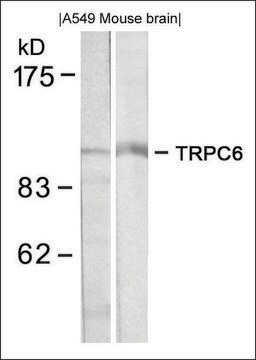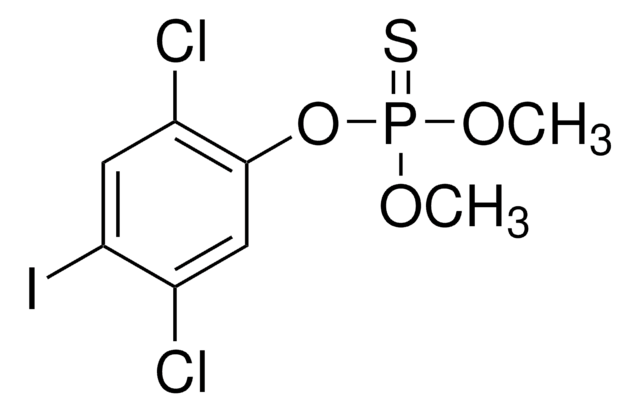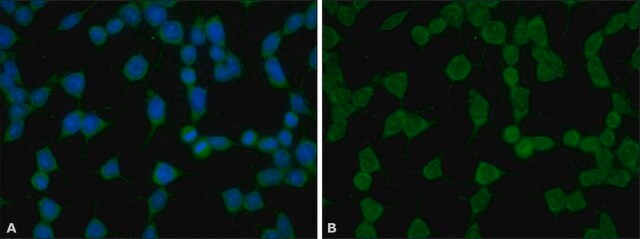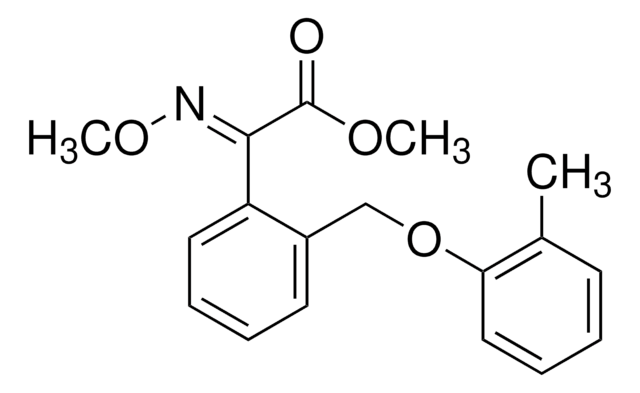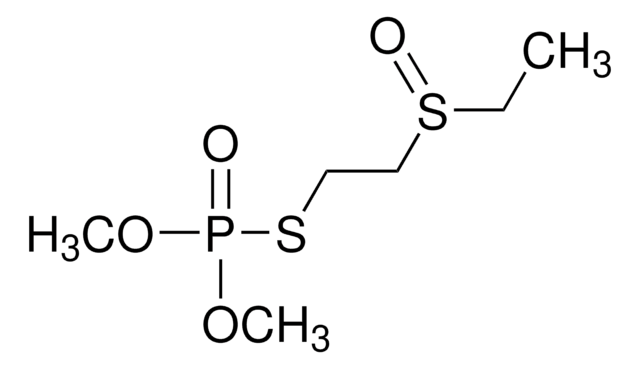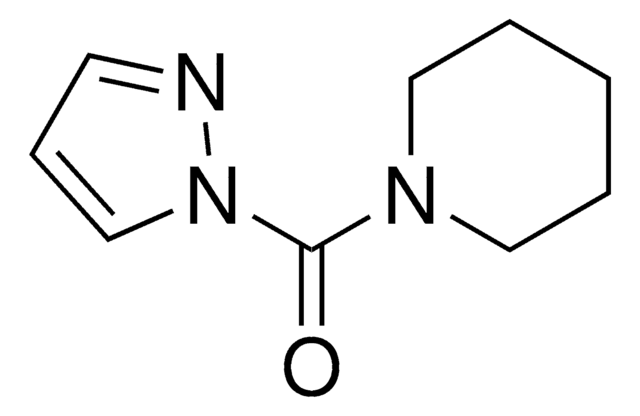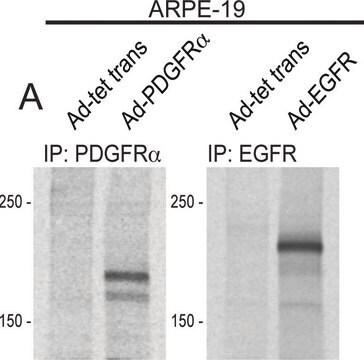추천 제품
생물학적 소스
mouse
결합
unconjugated
항체 형태
ascites fluid
항체 생산 유형
primary antibodies
클론
ABL-148, monoclonal
분자량
antigen 145 kDa
종 반응성
monkey, rat, human, mouse, bovine
기술
flow cytometry: suitable
immunocytochemistry: suitable
immunoprecipitation (IP): suitable
microarray: suitable
western blot: 1:2,000 using human melanoma cell extract
동형
IgG2a
UniProt 수납 번호
배송 상태
dry ice
저장 온도
−20°C
타겟 번역 후 변형
unmodified
유전자 정보
human ... ABL1(25)
mouse ... Abl1(11350)
rat ... Abl1(311860)
관련 카테고리
일반 설명
The c-Abl protein contains three high mobility group-like domains that bind to AT-rich DNA in a cooperative manner.
c-Abl is a proto-oncogene product that belongs to Tyr protein kinase family. It has a crucial role in different cellular processes like- differentiation, adhesion and regulates DNA damage-induced apoptosis.
특이성
Mouse anti-c-Abl antibody reacts specifically with an epitope present in the SH2 domain of the c-Abl. The product has also shown reactivity for c-Abl of monkey, rat, bovine, mouse and human.
면역원
recombinant c-Abl, SH2 domain.
애플리케이션
Monoclonal anti-c-Abl antibody can be used in western blotting (diluted 1:2000) using melanoma cell extract from human. It can also be used in microarray and flow cytometry. Monoclonal anti-c-Abl antibody can be used for studying the mechanism of signaling pathways involving c-Abl. It may also be used for immunoprecipitation and immunocytochemistry.
생화학적/생리학적 작용
Cytoplasmic c-Abl regulates SH2/SH3 adaptor protein cytoskeleton-associated adaptor protein (Crk) and the Crk-binding protein p130cas. Nuclear c-Abl has been implicated in the regulation of cell cycle-dependent and DNA damage-induced gene expression.
표적 설명
c-Abl is a non-receptor tyrosine kinase with both cytoplasmic and nuclear functions. The Abl oncogen has been implicated in several human leukemias including nearly all chronic myelocytic leukemias.
면책조항
Unless otherwise stated in our catalog or other company documentation accompanying the product(s), our products are intended for research use only and are not to be used for any other purpose, which includes but is not limited to, unauthorized commercial uses, in vitro diagnostic uses, ex vivo or in vivo therapeutic uses or any type of consumption or application to humans or animals.
적합한 제품을 찾을 수 없으신가요?
당사의 제품 선택기 도구.을(를) 시도해 보세요.
Storage Class Code
10 - Combustible liquids
WGK
nwg
Flash Point (°F)
Not applicable
Flash Point (°C)
Not applicable
시험 성적서(COA)
제품의 로트/배치 번호를 입력하여 시험 성적서(COA)을 검색하십시오. 로트 및 배치 번호는 제품 라벨에 있는 ‘로트’ 또는 ‘배치’라는 용어 뒤에서 찾을 수 있습니다.
Cytoplasmic c-Abl provides a molecular `Rheostat?controlling carcinoma cell survival and invasion
Kain KH, et al.
Oncogene, 22(38), 6071-6071 (2003)
c-Abl: activation and nuclear targets
Shaul Y
Cell Death and Differentiation, 7(1), 10-10 (2000)
Gonzalo I Cancino et al.
Brain : a journal of neurology, 131(Pt 9), 2425-2442 (2008-06-19)
There is evidence that amyloid beta-protein (Abeta) deposits or Abeta intermediates trigger pathogenic factors in Alzheimer's disease patients. We have previously reported that c-Abl kinase activation involved in cell signalling regulates the neuronal death response to Abeta fibrils (Abeta(f)). In
Regulation of phagocyte NADPH oxidase by hydrogen peroxide through a Ca(2+)/c-Abl signaling pathway.
Amina El Jamali et al.
Free radical biology & medicine, 48(6), 798-810 (2010-01-02)
The importance of H(2)O(2) as a cellular signaling molecule has been demonstrated in a number of cell types and pathways. Here we explore a positive feedback mechanism of H(2)O(2)-mediated regulation of the phagocyte respiratory burst NADPH oxidase (NOX2). H(2)O(2) induced
Z M Yuan et al.
Proceedings of the National Academy of Sciences of the United States of America, 94(4), 1437-1440 (1997-02-18)
Activation of the c-Abl protein tyrosine kinase by certain DNA-damaging agents contributes to downregulation of Cdk2 and G1 arrest by a p53-dependent mechanism. The present work investigates the potential role of c-Abl in apoptosis induced by DNA damage. Transient transfection
자사의 과학자팀은 생명 과학, 재료 과학, 화학 합성, 크로마토그래피, 분석 및 기타 많은 영역을 포함한 모든 과학 분야에 경험이 있습니다..
고객지원팀으로 연락바랍니다.